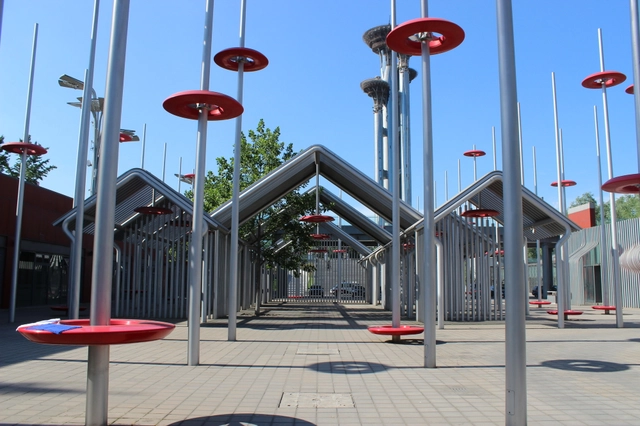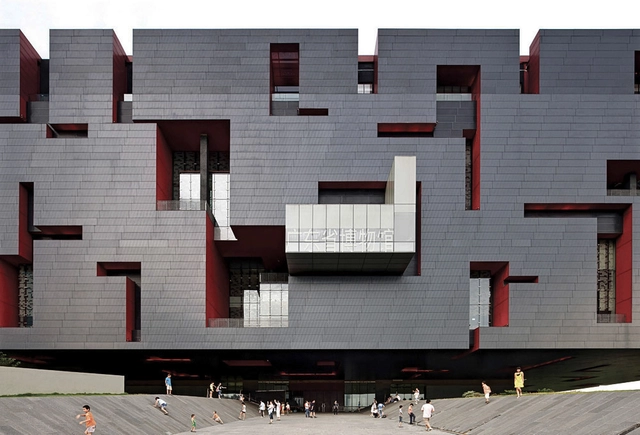Seoul is considered one of the most densely-populated and over-priced cities in the world, reaching a staggering $ 80,000 per square meter. The extreme conditions of the city have forced local architects to operate, design, and build framing the city's urban issues, traditions, and history. This approach by architects has created the theoretical basis of “The Condition of Seoul Architecture”, a publication by multidisciplinary practice TCA Think Tank which sees the point of view of 18 innovative South Korean architects. In this interview, Pier Alessio Rizzardi, founder of the practice, talked to Hwang Doo-jin of Doojin Hwang Architects, and discussed traditional Korean Architecture, universal space, and his traditional approach for an alternative contemporary architecture.
Pier Alessio Rizzardi
Hwang Doo-jin of Doojin Hwang Architects on Universal Space and Traditional Korean Architecture
Cho Byoung-soo of BCHO Architects on Korean Culture and Nature
Seoul is considered one of the most densely-populated and over-priced cities in the world, reaching a staggering $ 80,000 per square meter. The extreme conditions of the city have forced local architects to operate, design, and build framing the city's urban issues, traditions, and history. This approach by architects has created the theoretical basis of “The Condition of Seoul Architecture”, a publication by multidisciplinary practice TCA Think Tank which sees the point of view of 18 innovative South Korean architects.
In this interview, Pier Alessio Rizzardi, founder of the practice, talked to Cho Byoung-soo of BCHO Architects, discussing traditional Korean Architecture, the struggles of the contemporary Identity, and his sensitive approach to materiality, nature and time.
Young Joon Kim of Yo2 Architects on Rethinking Contemporary Seoul
Seoul is considered one of the most densely-populated and over-priced cities in the world, reaching a staggering $ 80,000 per square meter. The extreme conditions of the city have forced local architects to operate, design, and build framing the city's urban issues, traditions, and history. This approach by architects has created the theoretical basis of "The Condition of Seoul Architecture", a publication by multidisciplinary practice TCA Think Tank exhibited in the last Seoul Biennale, which sees the point of view of 18 innovative South Korean architects.
In this interview, Pier Alessio Rizzardi, founder of the practice, interviewed Young Joon Kim of Yo2 Architects, City Architect of Seoul, professor at MIT and Seoul National University, and curator of the Seoul Biennale. The atelier focuses on the creation of new architectural solutions using an urbanistic approach to architecture based on the complexity of contemporary life in Seoul.
An Interview with Xu Tian Tian, DnA Design and Architecture

"In China there’s history but there’s no existing context. All the contexts are made for the future. Most of the designs, most of the buildings are only designed for a planning scenario lasting five or ten years. And in that case, first of all, you need to accommodate functions for the future, for the planned purpose. I’d say even though the current project is in a very rural area, it could soon, let’s say in just one or two years, become a populated area. So that’s a different challenge here when you are designing in China."
- Xu Tian Tian, Beijing 2013
Spontaneous Artist Community
Xu Tian Tian: What condition is Songzhuang in, in general? I haven’t been there for quite a while.
Pier Alessio Rizzardi: Songzhuang is developing very rapidly, everything was under construction, and especially in the areas around your three projects the residential buildings were growing fast… I must say that all the projects you designed [Songzhuang Artists’ Residence, Museum and Cultural Centre] were extremely damaged.
Xu Tian Tian: That’s quite disappointing...
An Interview With Zhang Bin, Atelier Z+

"It’s really easy to build a building. From the very beginning to the realization; it’s very easy! You just give it an interesting form and you get approved. But the real issues are how to make it user-friendly and to enhance the quality of the life of the people trying to escape the influence of the “system”. That’s the challenge. In my experience […] I’ve learned that for architects, both Chinese and foreign, the use of form to create an object is easy but how to do the right thing is very challenging."
- Zhang Bin, Shanghai, Sept 2013
An Interview with Lu Wenyu, Amateur Architecture Studio
.jpg?1431461903)
“Every couple of years a new manifesto appears, but how long can it last? We need more people doing instead of talking. [At Amateur Architecture Studio] we spend an enormous amount of time experimenting, trying to resurrect the craftsmanship that is almost lost. We use a method that is passed on, hand-to-hand, to re-establish tradition instead of talking about abstract but empty concepts.”
- Lu Wenyu, Hangzhou, 2013
Pier Alessio Rizzardi: “A house instead of a building” is a really famous phrase of Amateur Architecture Studio. What is the meaning behind this concept?
Lu Wenyu: Once, Wang Shu said: “we only make houses, we don’t make architecture.” The house and architecture here have their own meanings. Making a house means making it for the people, making it more tranquil, or closer to nature, more humanized. Instead, architecture is an abstract concept, so many designs nowadays are actually architecture. So this sentence, from almost 20 years ago, “making houses, not architecture”, is about not making that abstract concept, but to make something really concrete and tangible, something that you can touch or that is made with your own hands… so when you see this house, you feel differently.
An Interview With Chen Yifeng, Deshaus

“We use two aspects to express architecture: Qing [emotion], Jing [pattern]. Jing is the architectural pattern that we apply, to certify the living and working style, to consider what our architecture can bring. Another thing is the relationship between architecture and the site, the city and nature. Ancient Chinese dwellings are usually enclosed by walls, creating an introverted space. This is the second aspect Qing, more related to traditional customs, aesthetics, and our attitude towards the environment and nature. The enclosed space originates from our interpretation of Qing. What we have captured about the ancient spirit of aesthetics is a kind of uncertainty, a kind of blurry and ambiguous feeling.”
- Chen Yifeng, Shanghai, 2013
An Interview with Zhu Pei, Pei-Zhu Studio

“If we look at architecture from a cultural point of view, we see we are in a special moment where we are trying to figure out our identity. I think we are too focused on how to transform old Chinese architecture into contemporary architecture; but in no way can you transform it, you can see it with your own eyes. For instance you cannot transform a Roman building into today’s buildings! Sometimes you have to forget about history to create contemporary and unique architecture.”
- Zhu Pei, Beijing, 2013
An Interview with Liu Xiaodu, Urbanus

“If you don’t know or really didn’t study the local culture, do universal design. That’ll keep the quality. If you want to do something that you don’t know, there is a big chance that it’s going to fail and have a bad impact on the city and the people here. Do it in your own way. If you do something good and beautiful back home, you should do exactly the same type and put it here. That’s also a good contribution because you show good architecture quality… Do something universal!” - Liu Xiaodu, Shenzhen, 2013
Founded in 1999, Urbanus is led by its trio of partners Meng Yan, Wang Hui and Liu Xiaodu, all of whom studied first in China and then abroad in the USA before returning to their native country at the very beginning of its construction boom. In this interview Liu Xiaodu discusses the changing realities of Chinese architecture education, the beginnings of their firm and the positive side to the “chaos” of the country's current urban expansion.
An Interview with Zhang Lei, AZL Architects

“We have to try to work with scale and memory. I think in the last twenty years the main problem is that we lost the 归宿感 [sense of belonging]. The people here have been moving from house to house for a long time, the result is that we don’t have a feeling of home… even if you are staying in a nice house or villa you don’t consider it as an ideal or permanent home where you could stay. This might be considered the problem. More than ten years ago we used to have that feeling, the sense to belong to a specific space. We used to live in neighbourhoods where we had a social background, a community, now you don’t have any community, you don’t see the neighbors any more. Now Chinese people are becoming lonely, they are losing that feeling and becoming 'homeless'.” - Zhang Lei, Nanjing, 2013
Interview with Qi Xin of Qi Xin Architects and Engineers

Architecture is not important. You can make a microclimate or situation, but you cannot have more influence about life or the urban situation, it’s just a very small operation you are working on, and you cannot control the situation of the city.. But even if you are just working on a single object here, you can always try to have more or less a positive influence on the city, you can always contribute in your way to the city, to the citizens. But in a larger view it’s not that important; it’s you or somebody else. The people are happy or not, their happiness is not relying on your architecture.” - Qi Xin, Beijing, 2013
Shedding light on topics from China's rapid urbanization to the issue of copycat architecture, this interview of Chinese architect Qi Xin conducted by Pier Alessio Rizzardi questions the role of architecture in Chinese society, and reveals the mindset of the modern Chinese architect. Qi Xin's answers challenge many of the myths surrounding Chinese architecture, often through one-line gems such as “what is permanent for Chinese people is the spirit, not material,” and “the most important thing is that we don’t know where we are going... we are making the future cities.”
China's "City-Making Process": Investors' Power in the People's Republic

The world is looking at the urban machine of Chinese cities, at the newly founded theme-cities and at the new urban economic investment areas around the cities. The buildings are repetitive, the areas are sometimes uninhabited, but the thing that leaves urban planners, architects and the public amazed is that these buildings are often completely sold out even before they are completed.
To buy these freshly constructed residences takes money, and over the last three decades the Chinese economic miracle served precisely to grow the per capita income. The reform of the economic system in 1978 was the driving force that triggered the mechanism of capital production. The reform led to millions of people migrating to the cities from the underdeveloped west of the country in search of higher salaries and a well-founded hope of revolutionizing their economic existence.
Interview with Rocco Yim of Rocco Design

"In the ancient culture identity is a touch of spatiality. Our use of space is psychological, you line up sequences of courtyards and buildings in order of importance so it prepares your mood, they get a sense of anticipation. We could reuse this spatially in today’s different types of buildings to achieve different purposes, but it originates from the past — that makes it Chinese." -- Rocco S. K. Yim, Hong Kong, 2013
On the 38th floor of the AIA Tower, Rocco Yim’s office faces the bay, from which you see the quintessential view of the city: the Hong Kong skyline. Rocco Yim is the founder of Rocco Design Architects Limited (founded in 1982) and responsible for the design of iconic buildings like the International Finance Centre in Hong Kong. In this conversation he talks about the importance of the density created and supported by the urban flow in China, and his unique point of view on iconic architecture in relation to ancient culture.












.jpg?1431461996)
.jpg?1431461914)
.jpg?1431461954)
.jpg?1431462140)























